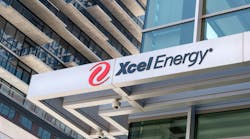Ryan Long, President (MN, ND, SD) of Xcel Energy, discussed energy challenges and innovation at the University of St. Thomas Finding Forward event.
Long highlighted Xcel’s plans and progress to achieve an ambitious transition while minimizing the risks to communities and customers at the event. According to Long, the company is balancing four objectives namely cost, risk, environmental concerns, and reliability.
The company plans to close its remaining coal-burning plants by 2030. Xcel is developing a solar facility on land around one closing coal plant to access existing power lines and help the community by providing jobs and economic activity. New wind turbines throughout the region will also add to carbon-free capacity.
The company is experimenting with new Form batteries built alongside the new solar field. The batteries use iron oxidation to store as well as release energy and help deliver power for 100 hours to keep the grid stable when required.
New natural-gas burning turbines to cover peak demand are also planned, which will add new fossil fuel generation and reduce emissions. Xcel is investing in hydrogen-generating facilities to replace natural gas in the future.
Xcel is in talks with Minnesota to keep its three nuclear reactors in the state active until 2050.
Under Dr. Mahmoud Kabalan, associate professor of electrical engineering and the founding director of the Center for Microgrid Research at the University of St. Thomas, the university has deployed a pilot microgrid on campus and aims to improve it in coming years.
Long finds potential in new modular nuclear reactors, which use molten salt and are safer and smaller as compared to the existing reactors. While Long expects Xcel’s energy transformation to progress with the recent major coal plant decommissioning, Kabalan focuses to work on climate change path and new promising technologies.


